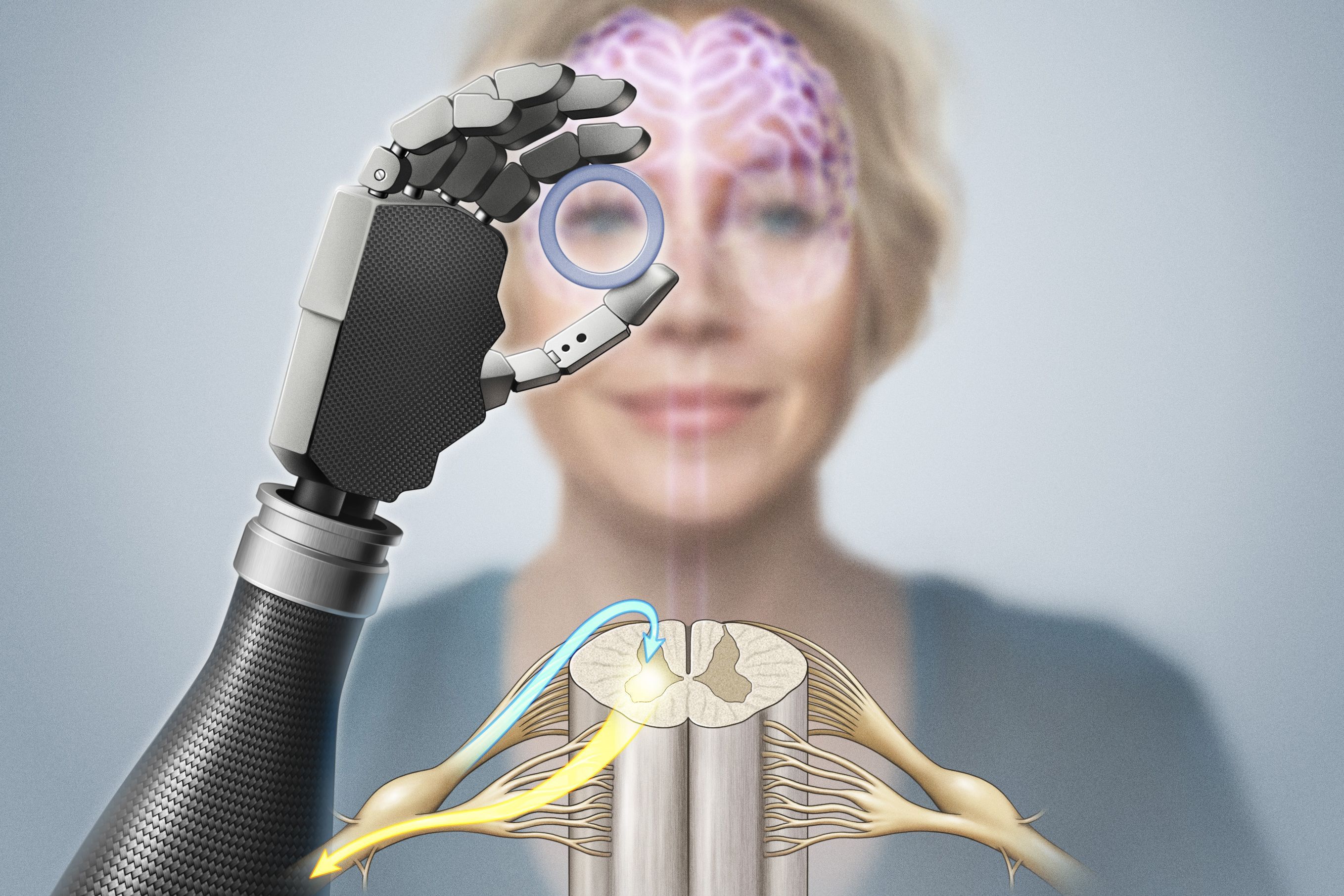
(Vienna, 31-05-2022) Bionic reconstruction, i.e. the replacement of missing limbs with artificial ones, has made great progress in recent years. However, the intuitive control of these prostheses and the perception of the artificial limb as a separate part of the body continue to pose challenges for researchers. An important breakthrough has been achieved in this area as part of a study led by the Imperial College London and with the significant involvement of the MedUni Vienna. The results, recently published in "Science Robotics", show for the first time how the remaining body's natural reflexes can be used to create a reliable interface for controlling bionic limbs and make movements more natural.
In order to improve the intuitive fine-tuning of muscle movements, the research teams led by Dario Farina (Imperial College London) and Oskar Aszmann (Medical University of Vienna) made use of the body's own reflex mechanisms. The movement control of artificial limbs and the feeling that they belong to one's own body depend strongly on so-called proprioceptive feedback. This refers to the perception of the position and movement of one's own body in space, which is made possible by continuous information from muscles, tendons and joints to the brain and spinal cord, even when the eyes are closed. "The integration of these reflex mechanisms at the level of the spinal cord into the control of bionic prostheses has never been attempted before," says co-author Oskar Aszmann (Clinical Laboratory for Bionic Limb Reconstruction, Department of Plastic, Reconstructive and Aesthetic Surgery), outlining the starting point for the study.
Previously unprecedented prosthesis control
For the first time, the research team was able to demonstrate that natural sensory information can be integrated into the commands for controlling bionic limbs. This integration was achieved by modulating the activity of control signals via a reflex loop of tendon receptors. Specifically, the tendons that directly trigger spinal cord reflexes were stimulated, enabling natural and intuitive control of the movements of artificial limbs. This system was tested on seven patients who had received bionic limbs following amputation of their forearms while performing various everyday activities and led to " a previously unprecedented level of prosthetic control": "This was the first time that we were able to give patients a self-perception of their bionic limb," says Oskar Aszmann, describing the scope of the results from basic research, which could be used in clinical applications in the near future and also drive forward the fusion of biological processes with technological aids.
Publication: Science Robotics
Excitation of natural spinal reflex loops in the sensory-motor control of hand
prostheses
Patrick G. Sagastegui Alva, Anna Böesendorfer, Oskar C. Aszmann, Jaime
Ibáñez, Dario Farina
DOI: https://www.science.org/doi/10.1126/scirobotics.adl0085